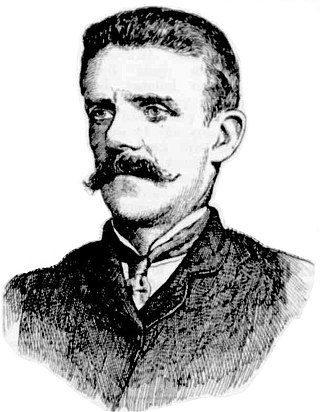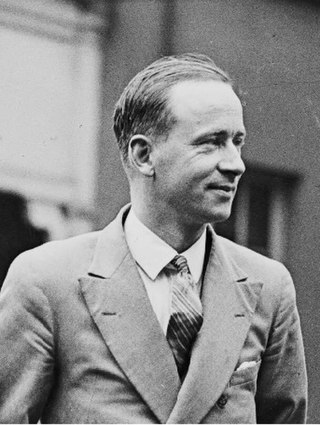
Waverley is a suburb in the Eastern suburbs of Sydney, in the state of New South Wales, Australia. Waverley is located seven kilometres east of the Sydney central business district, in the local government area of Waverley Council.

Waverley Council is a Local government area in the eastern suburbs of Sydney, in the state of New South Wales, Australia. First incorporated on 16 June 1859 as the Municipality of Waverley, it is one of the oldest-surviving local government areas in New South Wales. Waverley is bounded by the Tasman Sea to the east, the Municipality of Woollahra to the north, and the City of Randwick in the south and west. The administrative centre of Waverley Council is located on Bondi Road in Bondi Junction in the Council Chambers on the corner of Waverley Park.

Thomas Rowe was a British-born architect, builder and goldminer who became one of Australia's leading architects of the Victorian era. He was also a politician, who was the first Mayor of Manly.

John Norton was an English-born Australian journalist, editor and member of the New South Wales Parliament. He was a writer and newspaper proprietor best known for his Sydney newspaper Truth. Norton was arguably one of Australia's most controversial public figures ever.

Alfred Edden was a politician, trade union organiser and coal miner in New South Wales, Australia. He was a member of the New South Wales Legislative Assembly for more than 28 years, including 3 as Secretary for Mines. He was a foundation member of the Labor Party but left the party twice, in 1891 over the question of the solidarity pledge and was expelled in 1916 over the question of conscription.

Major Clarence Edward Martin was an Australian politician and a member of the New South Wales Legislative Assembly from 1930 until 1932 and from 1939 until his death in 1953. He was variously a member of the Australian Labor Party (NSW), the Industrial Labor Party and the Labor Party (ALP). He was the Attorney General of New South Wales from 1941 until 1953 and also held the position of Minister for Transport for six months prior to his death.

The Fitzroy Iron Works at Mittagong, New South Wales, was the first commercial iron smelting works in Australia. It first operated in 1848.

Alfred Gambier Newman was an Australian architect active in the first 20 years of the 20th century. He designed significant work for both the Methodist Church and the Newman and Vickery families.

John Beveridge, JP was a New South Wales businessman, sportsman and local government politician, who served as an Alderman (1886–1891) and Mayor of Redfern (1891).
James Ebenezer Tonkin was an English-born Australian politician.
Lewis Lloyd was a Welsh-born Australian mining entrepreneur and politician.
Thomas Brown was a Scottish-born Australian politician.

Alexander Cecil Knox Mackenzie was an Australian cricketer. He played 48 first-class matches for New South Wales and Rest of Australia between seasons 1888/89 and 1906/07. In the Sydney grade competition he is most well known for having played for the Paddington and Waverley clubs.

Barnett Levey was a Jewish English–Australian merchant and theatre director. Levey was born in London and migrated to Sydney in December 1821 as the first free Jewish settler. From 1826 Levey had joined concerts as a singer. In 1832 he received the first theatre license. In 1833, Levey founded Theatre Royal, Australia's oldest theatrical institution, and has been regarded as the "father of Australian theatre."
John Douglas Morrison was an Australian police officer for the New South Wales Police Force, where he rose to the rank of Chief Inspector, and local government politician who was an alderman, deputy mayor and mayor of the Municipality of Waverley. He was the father of Australian Prime Minister, Scott Morrison.

William Johnson (1811–1866) was an English-born organist, conductor, composer, organ builder and music publisher based in Sydney.
A by-election was held for the New South Wales Legislative Assembly electorate of Hartley on 21 April 1876 because the Committee of Elections and Qualifications found that Thomas Brown had an office of profit under the crown and declared that his seat was vacant.

Obed West was an early resident of Sydney, Australia and a story-teller of its early days.
The Lyceum was a live theatre in Sydney, Australia, which became the Sydney City Mission for the Methodist Church.
Farmer and Company, commonly known as "Farmer's", was a retail store in Sydney, Australia.















